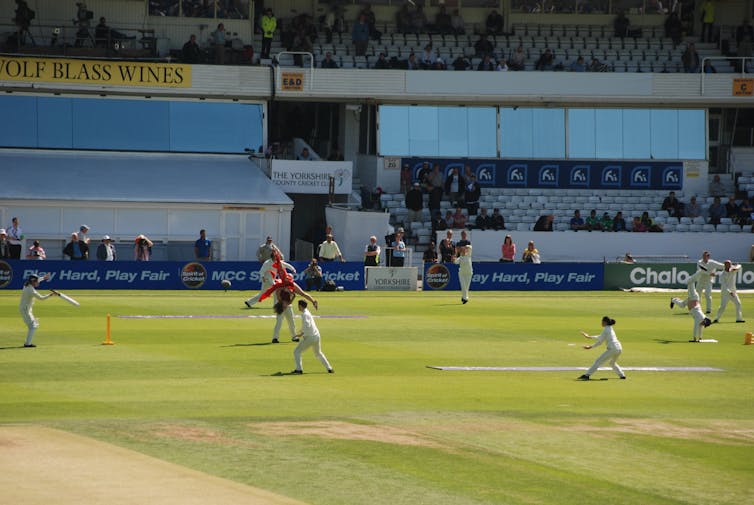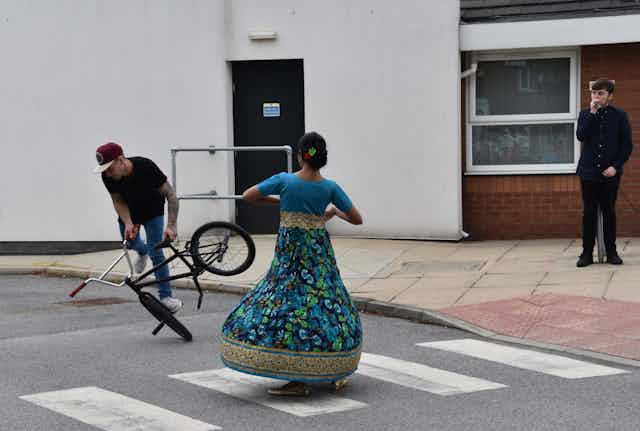Sport and the arts are vital components of the UK’s national culture, but are often treated as though they are separate worlds, despite both being the responsibility of the Department for Digital, Culture, Media and Sport. It is striking how few mentions sport gets in arts strategies and vice versa. The Culture White Paper published just last year has no place for sport.
Historically, sports and arts were not always so separated. Ancient Greek culture, for example, was quite comfortable celebrating the physical and the aesthetic together. But in today’s pigeon holes, the arts are typically characterised by the aesthetic and sport by competition. Yet the aesthetic of gymnastics, ice skating or diving is clear. Equally, events like the Turner prize demonstrate that the arts are not averse to a bit of competition. And part of de Coubertin’s vision for the modern Olympic Games was to glorify beauty through involvement of the arts and the mind.

The government invests in sport and the arts not just for their own sake, but for the very similar social roles they are expected to play. Nevertheless, collaboration and partnership, never mind synthesis, do not come easy. Therefore, our team based around Leeds Beckett has been exploring how we might envision a modern synthesis of sport and the arts. We recognise that people often do see sports and arts quite differently and different people feel comfortable in those respective environments. So how might we reconnect these two cultural spheres?
Arty sport, sporty art
Despite the separation of sport and the arts in government and popular thinking, a number of recent initiatives at local level show what can be achieved by bringing them together.
Some examples are eccentric and fun. When the first stages of the Tour de France came to Yorkshire in 2014, part of the route went up Cragg Vale – 968 feet of ascent over five and a half miles that is claimed to be the longest continuous gradient in England. A few weeks before the professionals arrived, another group of cyclists took on the climb as part of the accompanying Yorkshire Festival. Their challenge was rather different; riding up Cragg Vale while pulling a baby-grand piano with someone sitting on the stool playing music specially composed for the occasion.

Others offer new creations. Last year, when the World Triathlon Series came to Leeds, there was an accompanying events programme. As I approached one of the locations, I could hear a beat boxer, but paid little attention. Then I saw that he was accompanying a BMX rider doing tricks on his bike. Later, Indian music also came from the speakers and they were joined by a classical Indian dancer. Dancer and rider performed a duet, doing their sinuous movements and spins together.
And at the Cultural Olympiad programme in Yorkshire, we came across the Sea Swim project in Scarborough, which grew organically to occupy a third space between sport and the arts. Participating alongside each other, poets swam and members of a local swimming club wrote poetry that affirmed their sense of place.
Synthesis
Some of these hybrids may seem gimmicky, but our project has revealed that such collaborations do promote new forms of creativity and experimentation.
Artists bring something different to sport and sport can present artists with inspirational ideas of physicality and movement. We found that such collaborations disrupt stereotypes of what constitutes art and sport; stereotypes that see (some) sports as being the preserve of working-class males and (some) arts as being for middle-class females. Just as the idea of competition is attracting increasing interest in the arts, so too is creativity in sports. This increases the chance of both arts and sports attracting new participants or audiences.
What’s more, research evidence and practical experience show how sports and arts together can help to achieve social inclusion with gains in education, employment, integration and community safety. The most clearly demonstrated benefits of greater engagement, however, are to be found in improved mental and physical health.

Awkward relations
But such is the normal separation of the two spheres that those who try to inhabit both can feel out of place in either. Think of the former England international footballer Graeme Le Saux, who, because he read The Guardian and went to art galleries, was “naturally” presumed to be gay. At an institutional level, people working in the arts or sports may benefit from protecting their own territories by keeping their distance.
We recognise the challenges that have to be addressed if stereotypes and organisational resistance are to be overcome so that the potential benefits from combining sport and the arts can be realised. As such, we have produced a manifesto which organisations and leading individuals in the field are invited to endorse.
The manifesto calls upon arts and sports organisations and their communities to start by talking to each other to explore collaboration and recognise that the search for new participants and audiences will be helped by new hybrid forms and practices. Cultural policies need to incorporate sport, and more generally all strategies for sport and the arts should acknowledge the other.
It is important to look beyond short term “demonstration” initiatives like the local ones described above and plan for the longer term. Where “partnerships” are established to address community need, we want both sport and the arts to be represented and funded. Community projects can be more successful if they offer both sports and arts, rather than providing only one or the other. We also advise that major festivals provide a showcase for experimenting with sports-arts collaboration projects.
The treatment of sport and art as separate worlds neglects the potential that might be fired by bringing these two fields together.

